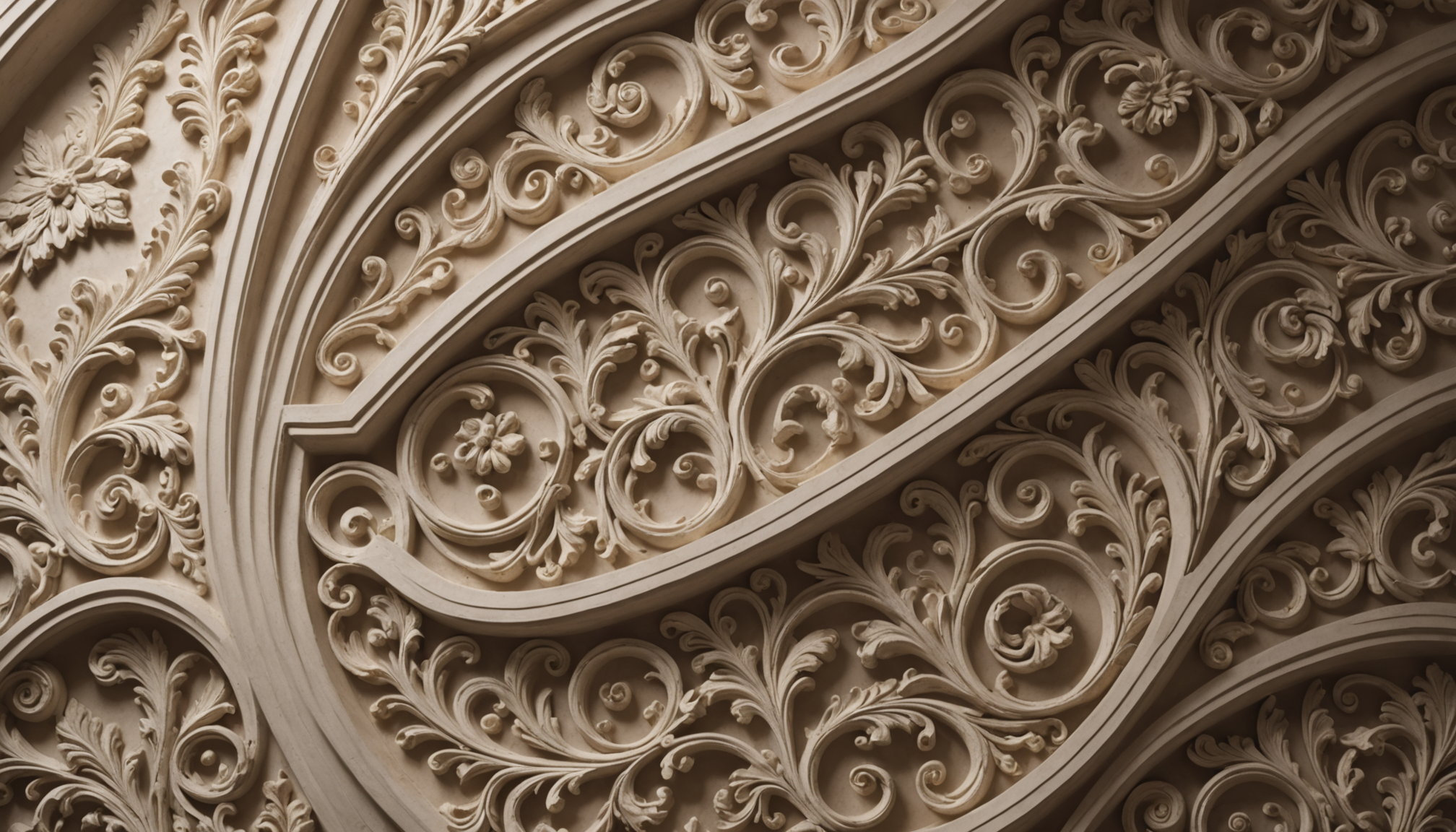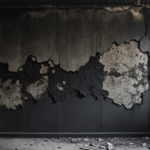When considering the materials used for interior wall finishes, drywall and plaster often figure prominently as two of the most popular choices. Both have been utilized extensively in construction, yet they offer unique characteristics that may influence your decision based on several factors, including cost, durability, and design flexibility.
One of the primary distinctions between drywall and plaster is their composition and structural nature. Drywall is composed of gypsum, a mineral-based material, typically sandwiched between two sheets of heavy paper. This makes it relatively lightweight and easy to cut, which accelerates the installation process. In contrast, plaster is a mixture of lime or gypsum, sand, and water. It is applied wet over lath and left to set and harden, providing a more solid finish.
Let’s delve deeper into how these two materials compare in several key areas:
| Aspect | Drywall | Plaster |
| Composition | Gypsum sandwiched between paper | Lime or gypsum with sand and water |
| Installation | Quicker and easier with prefabricated panels | Involves multiple layers, more time-consuming |
| Flexibility | Limited to panel size, straight surfaces | Highly versatile, suitable for curves and intricate designs |
| Sound Insulation | Moderate; requires additional insulation for enhancement | Denser, often provides superior soundproofing |
| Cost | Generally less expensive | More costly due to labor-intensive application |
| Repair | Simple patchwork and replacement | More complex and skill-intensive |
The choice between drywall and plaster often comes down to a balance of these factors, modified by specific home requirements and personal preferences. For example, if ease and speed of installation are paramount, drywall may be the preferable choice. Alternatively, for those prioritizing a distinctive design aesthetic with superior sound insulation, plaster could be the more suitable option.
Moreover, climate and environmental conditions can further influence this decision. Plaster’s density makes it more resistant to damage in humid conditions, whereas drywall can be susceptible to mold and damage in similar environments. These nuanced differences highlight why many homeowners and builders make choices tailored specifically to the needs of each project.
durability and longevity
Drywall and plaster each offer distinct advantages when it comes to their durability and longevity, aspects that are fundamental in determining which material may be a better fit for your home or project.
1. Resistance to Impact and Wear:
– Drywall: Generally, drywall is more prone to dents and dings than plaster. The material’s lighter and less dense construction means that impacts from furniture, door knobs, or other objects can more easily cause visible damage. Although easily patched and repaired, its susceptibility to everyday wear might be a factor worth considering for high-traffic areas.
– Plaster: Known for its toughness, plaster is much more resilient to impact compared to drywall. The dense composition provides a harder surface which offers increased resistance against knocks and abrasions. This makes plaster an ideal choice for environments subject to frequent contact or where a higher level of durability is required.
2. Moisture Resistance:
– Drywall: Generally, drywall is more vulnerable to moisture damage, which can lead to issues like warping, staining, or mold growth if exposed to sustained humidity or water. However, moisture-resistant drywall variants, such as green board, are available for areas like bathrooms and basements, but they can come at a higher cost and still may not match plaster’s natural resistance to moisture.
– Plaster: Plaster inherently possesses better moisture resistance than standard drywall. Its density and application process better inhibit moisture penetration, making it less prone to mold and mildew in damp conditions. While not entirely waterproof, it is often favored in humid climates or in rooms where moisture exposure is common.
3. Longevity:
– Drywall: The lifespan of drywall can be quite substantial, often lasting upwards of 30 to 50 years when properly maintained. However, this longevity is greatly influenced by environmental conditions and potential physical damage over time.
– Plaster: Plaster walls, when well-maintained, can last much longer, even centuries, a fact evidenced by many older homes whose original plasterwork remains intact. This extensive lifespan is largely due to plaster’s robust nature and its ability to age gracefully.
4. Fire Resistance:
– Drywall: The gypsum core in standard drywall provides a certain level of fire resistance, as gypsum is a non-combustible material. Fire-rated drywall, such as Type X drywall, increases resistance further through additional additives.
– Plaster: Historically, plaster has been favored for its superior fire resistance. This stems from its dense structure and the presence of lime or gypsum, both of which have high resistance to heat.
In reviewing the durability and longevity attributes between drywall and plaster, consider not only the immediate conditions and uses but also your long-term needs and expectations. The decision should integrate the environment in which these materials will be placed and the demands they will face, ensuring a choice that aligns with both practical and aesthetic goals.
installation process and difficulty
When it comes to the installation process, the differences between drywall and plaster are quite significant and often influence the decision-making process for homeowners and contractors alike.
Ease and Speed:
Drywall installation is typically faster and more straightforward compared to plaster. This is because drywall comes in large, prefabricated panels that can be quickly cut and secured to the framing with minimal tools and expertise. Once secured, seams are taped and covered with joint compound to create a smooth surface. This process is relatively simple, usually requiring just a few days for a complete installation, making it an attractive option for those on a tighter timeline.
In contrast, plaster requires a more labor-intensive process. It involves applying several coats over a lath framework, which can be made from metal or wood. Each layer must dry before the next is applied, and proper technique is crucial to ensure a smooth, even finish. This multi-step process can take considerably longer than drywall installation, often requiring skilled artisans to achieve the desired result. As such, this can extend the timeframe of a project, though the outcome is often worth the wait for those seeking classic, eye-catching walls.
Complexity and Skill Requirement:
The skill level required for drywall installation is generally lower than that needed for plaster. Many homeowners can handle drywall installation as a DIY project, thanks to its user-friendly nature and the availability of comprehensive guides and resources. However, achieving a professional finish still requires a certain level of skill, particularly in taping seams and ensuring smooth application of the joint compound.
Plaster, on the other hand, is a technique traditionally passed down through apprenticeships and requires significant expertise to execute correctly. The application process not only involves a careful hand for uniform results but also a keen eye for detail in texture and style. This higher skill demand typically necessitates hiring professional craftsmen, which can add to the project’s overall cost.
Equipment and Tools:
The tools required for drywall installation are generally basic, including utility knives, drywall saws, a drill for securing screws, and joint knives for applying compound. This simplicity further contributes to its accessibility for DIY enthusiasts.
Conversely, plastering necessitates more specialized equipment, such as hawks and trowels, which are used to apply and smooth the plaster. Additionally, the use of a mixer is often required to prepare the plaster itself, ensuring a consistent and workable mixture. The terminological and practical nuances involved in plaster installation naturally restrict the task to those with adequate training and experience.
Environmental Considerations:
The preference for drywall or plaster can be influenced by the building environment as well. In modern, energy-efficient buildings with standard heating and cooling systems, drywall is often more than adequate. However, in older buildings or regions with fluctuating climate conditions, plaster’s robustness and ability to self-regulate humidity and temperature make it a suitable choice, compensating for any additional effort during installation.
When deciding between drywall and plaster from an installation standpoint, consider not only the immediate implications of time, cost, and labor but also the long-term benefits each might bring to your specific project. The right choice will align with both your practical needs and the aesthetic goals you envision for your space.
cost analysis
When weighing the financial aspects of choosing between drywall and plaster, it’s essential to evaluate both the initial costs and the long-term financial implications tied to each option. These materials not only differ in terms of upfront expenses but also in maintenance costs and potential value they add to a property.
In terms of initial outlay, drywall is generally more cost-effective. The materials, being mass-produced and widely available, tend to be less expensive per square foot than plaster. The installation process for drywall is also quicker and simpler, which reduces labor costs significantly. Given that drywall installation can often be accomplished without highly specialized skills, many homeowners opt to tackle it as a DIY project, further reducing potential expenses.
Conversely, plaster involves a higher initial investment. The materials themselves can be more expensive, particularly when opting for higher-end finishes or encompassing additional design features. Moreover, the installation of plaster is labor-intensive and demands skilled artisans to ensure quality results, driving up the cost of labor substantially. The multiple layers required, each needing adequate drying time, also result in a lengthier process, adding to the overall expense.
Looking beyond immediate costs, understanding the maintenance expenses involved with drywall and plaster is crucial. Drywall, while easier and cheaper to install, can accrue frequent repair costs. Its susceptibility to dents and scratches necessitates occasional patching, and in moisture-prone areas, the expenses of replacing water-damaged sections can add up. While the repairs themselves may not be costly, the frequency of these minor fixes can make drywall less appealing over time.
Plaster, while costly upfront, generally demands fewer repairs due to its durability. Its resilience to daily wear and its superior moisture resistance can result in lower maintenance costs over the material’s lifespan. Furthermore, the longevity of plaster walls, often exceeding that of drywall, can equate to financial savings in the long run. A well-maintained plaster wall can last for decades with little need for intervention, which can outweigh the initial cost difference when viewed from a long-term perspective.
Additionally, the aesthetic appeal and historical value associated with plaster can potentially enhance property value. Homes with well-crafted plaster finishes may attract buyers willing to pay a premium for the classic beauty and character they provide. While this might not be an immediate financial benefit, it is a consideration for those viewing their home as an investment.
Ultimately, the decision rooted in financial analysis should examine not only the costs of materials and installation but also factor in long-term maintenance and potential property value implications. Balancing initial affordability with lasting quality and appeal will guide an investment that aligns with both budgetary constraints and functional needs.
aesthetic and design flexibility
In terms of aesthetic and design flexibility, both drywall and plaster offer distinct capabilities that cater to different stylistic preferences and needs. Drywall, with its smooth and even surface, provides a consistent and clean canvas, making it ideal for modern homes where simplicity and uniformity are desired. Its ease of installation and ability to be quickly painted or wallpapered further enhances its appeal in spaces where change and updates may be frequent.
However, when it comes to unique and intricate design possibilities, plaster stands unrivaled. Its pliability allows for a wide range of finishes — from the smooth, polished look of Venetian plaster to textured applications that add depth and character. Plaster can be molded into curves and arches effortlessly, offering a level of versatility that drywall simply cannot match. This makes it a favorite in period homes or where architectural features like molded ceiling medallions, cornices, or ornamental wall designs are desired.
Furthermore, plaster’s ability to integrate pigments directly into the finish offers an advantage for creating vibrant, long-lasting colors without the need for additional painting. This characteristic not only enhances its aesthetic value but also reduces maintenance needs over time, as surface-level scuffs won’t reveal a different color beneath.
Despite these strengths, it’s worth noting that achieving these intricate designs with plaster requires skilled craftsmanship, which can significantly increase the time and cost of a project. Thus, the choice between drywall and plaster, in the context of aesthetic value and design freedom, ultimately depends on the project’s specific goals in terms of style, budget, and the vision for the space’s look and feel.
In conclusion, the decision between drywall and plaster involves weighing several factors that extend beyond mere installation. Drywall offers affordability and ease, making it suitable for straightforward projects and modern styles. On the other hand, plaster provides superior durability and unique design potential, catering to those seeking timeless elegance and robust functionality. By considering your priorities, whether they be cost-effectiveness, aesthetic goals, or long-term durability, you can make an informed choice that best suits your project’s needs and your personal taste.


